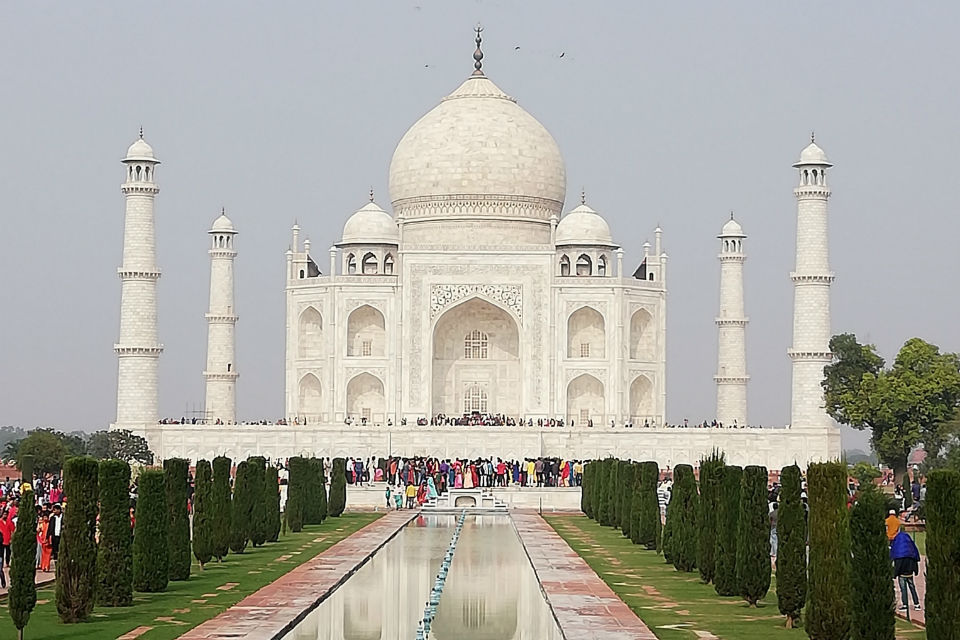India boosts infrastructure spending, aims to become global economic power

The Government of India has taken significant initiatives to strengthen the economic credentials of the country and make it one of the strongest economies in the world. India is fast becoming home to start-ups focused on high growth areas such as mobility, e-commerce and other vertical specific solutions – creating new markets and driving innovation.
Rise in domestic investments has been one of the biggest contributors to the India growth story and the public and private sector have both enabled and sustained these investments.
India has emerged as one of the strongest performers in terms of deals related to mergers and acquisitions (M&A). The value of M&A activity in India is estimated to have reached US$ 129 billion in 2018 and stood at US$ 41.6 billion in first half of 2019.
India also jumped 14 positions to secure 63rd rank in the World Bank’s Ease of Doing Business Ranking. This is a substantial improvement from its 142nd rank out of 189 nations in 2014.
In the last five years, India has taken major steps to improve environment for doing business. Department for Promotion of Industry and Internal Trade (DPIIT) under Ministry of Commerce & Industry has been spearheading the reform implementation process by sensitizing and encouraging various stakeholders to achieve well-defined targets.
India recorded maximum improvements in Dealing with Construction Permits (+157 rank improvement in 5 years), Getting Electricity connections for enterprises (+ 115 rank improvement in 5 years) and Resolving Insolvency (+85 rank) through Insolvency and Bankruptcy Code 2016.
In the last 5 years, India implemented over 27 reforms across, of which 4 reforms were acknowledged in this year’s rankings across following categories — Starting a Business, Dealing with Construction Permits, Trading across Borders, and Resolving Insolvency.
Considering the global economic and trade dynamics, India will continue to improve its business environment and considerably reduce cost of doing business.
In 2014, Government of India realized that registering improvements in World Bank’s Doing Business Rankings — that considers data from two cities, Mumbai and Delhi as a representation for entire India — will not be a true barometer of the actual reforms implemented across the country. In fact, municipal limits of Delhi and Mumbai do not have space or capacity to absorb new industrial investments.
DPIIT simultaneously initiated a major exercise of implementing reforms across Indian States and Union Territories through a structured program titled “Business Reforms Action Plan (BRAP).” This program in true sense harnessed the spirit of competitive and cooperative federalism.
Steps to create favourable environment for investments
Krishnamurthy Subramanian, Chief Economic Advisor, Government of India, recently said that the current slowdown in the Indian economy is more cyclical than structural in nature and the government has a well-thought-out agenda for reforms.
He said that private investment is the key driver of economic growth and consumption is a force multiplier. “The current slowdown is a lot more on the cyclical side. The steps we are taking, like the corporate tax rate cut, are intended to create a more favourable environment for investments that are required for sustained growth,” he explained.
The Government of India has taken several initiatives in various sectors to improve the overall economic condition in the country. Some of these are:
- In February 2019, the Government of India approved the National Policy on Software Products – 2019, to develop the country as a software hub.
- The National Mineral Policy 2019, National Electronics Policy 2019 and Faster Adoption and Manufacturing of (Hybrid) and Electric Vehicles (FAME II) have also been approved by the Government of India in 2019.
- In November 2018, the Government of India launched a support and outreach programme for the Micro, Small and Medium Enterprises (MSME) sector. It involves 12 key initiatives which will help the growth, expansion and facilitation of MSMEs across the country.
- In September 2018, the National Digital Communications Policy (NDCP) has been approved by Government of India with the objectives of attracting US$ 100 billion in investments, improved broadband connectivity and generation of four million jobs in the telecom sector.
- Securities and Exchange Board of India (SEBI) doubled the maximum investment by angel funds in venture capital undertakings to US$ 1.37 million.
- The Government of India has decided to invest US$ 28.8 billion to recapitalise public sector banks over the next two years and US$ 95.9 billion for construction of new roads and highways over the next five years.
- India and Japan have joined hands for infrastructure development in India’s north-eastern states and are also setting up an India-Japan Coordination Forum for Development of North East to undertake strategic infrastructure projects in the northeast.
- Union Ministry of Shipping plans to raise US$ 15.8 billion in dollar equivalents at the interest rate of three per cent, for developing ships, building ports and improving inland waterways.
- Ministry of environment and forests has granted environment clearance for 35-km coastal road connecting south and north Mumbai. The coastal road project is part of the US$ 9.52 billion transport infrastructure projects being undertaken by the state government and is expected to require an investment of US$ 1.34 billion.
- The Government of India will provide soft loan of US$ 1 billion to sugar mills to help them clear part of their US$ 3.33 billion dues to farmers. The money shall be directly credited to the farmer’s bank accounts through the Pradhan Mantri Jan-Dhan Yojana.
(By Petre Barac)














